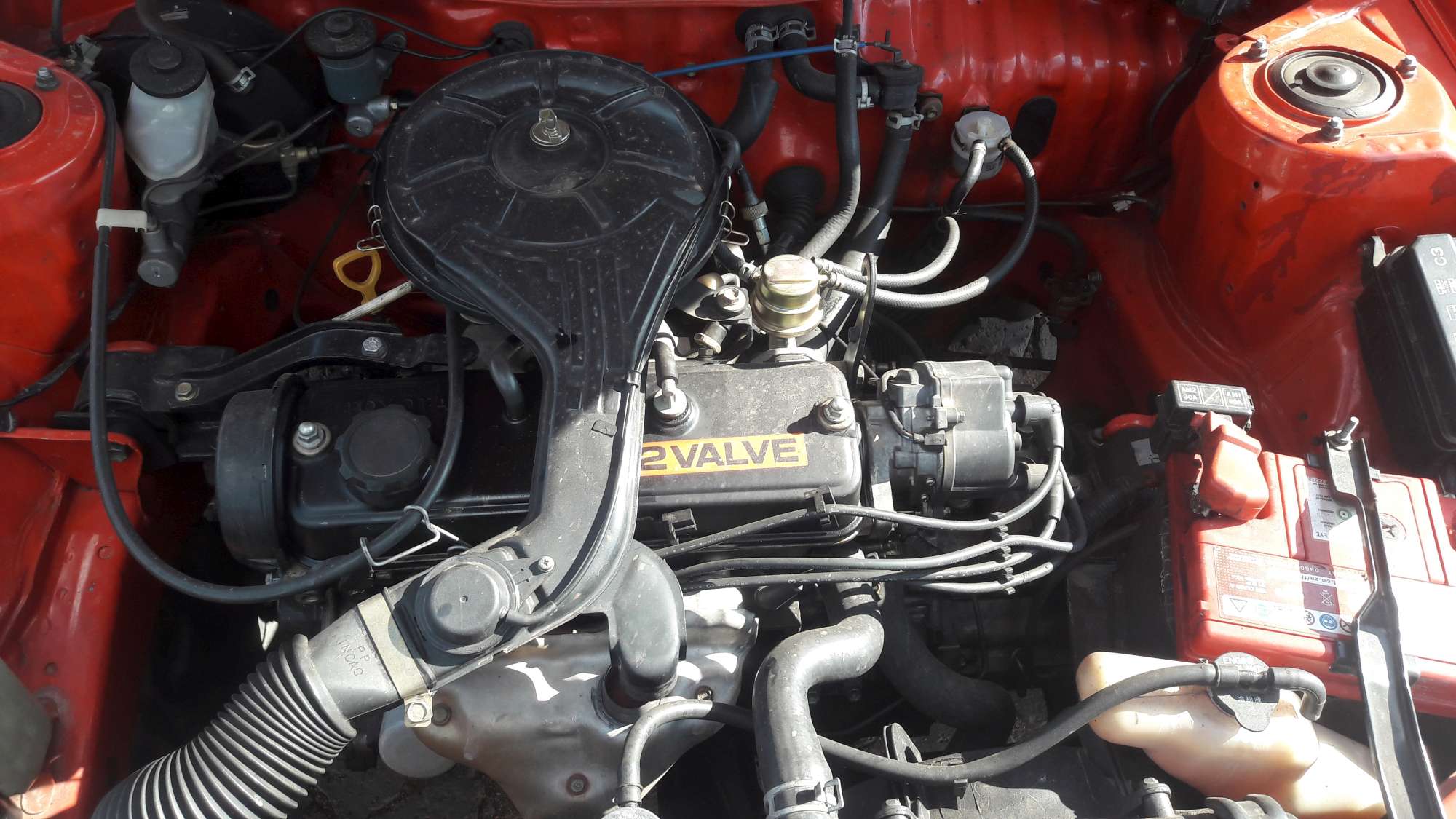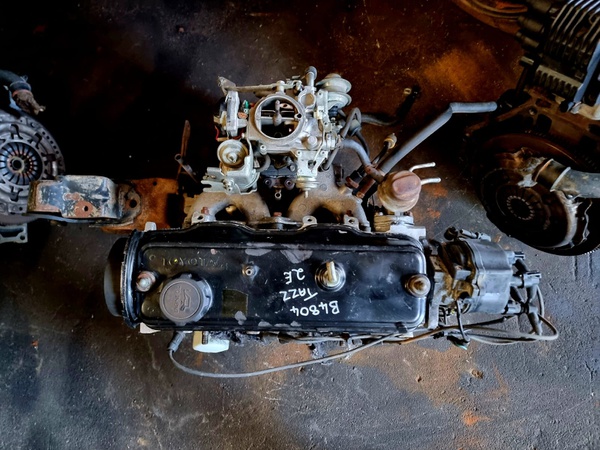Toyota Tazz: A Look at Its Popularity and Longevity in the Automotive Industry
Toyota Tazz: A Look at Its Popularity and Longevity in the Automotive Industry
Blog Article
Explore the current Trends in Engine Modern Technology Via Tazz
In the swiftly evolving landscape of auto modern technology, Tazz stands at the center, highlighting substantial innovations in engine systems that focus on both innovation and sustainability. From crossbreed engines that optimize fuel performance to the introduction of hydrogen fuel cells, the patterns shaping contemporary powertrains are not only enhancing performance however additionally dealing with essential environmental difficulties.
Hybrid Engine Innovations
Crossbreed engine innovations represent a pivotal shift in vehicle modern technology, incorporating the advantages of inner burning engines with electric propulsion systems. This combination not just improves fuel effectiveness but additionally decreases emissions, meeting increasingly stringent ecological guidelines. By using both power resources, hybrid engines can enhance efficiency, supplying power when required while saving fuel during less demanding motoring problems.
Recent developments in crossbreed technology include enhancements in battery efficiency and regenerative braking systems. These technologies enable better power healing during slowdown, which can be rerouted to assist in velocity or power auxiliary systems. Additionally, makers are concentrating on portable layouts and light-weight products to make best use of the efficiency of crossbreed powertrains.
The development of plug-in crossbreeds has additionally increased the market, making it possible for chauffeurs to charge their vehicles utilizing basic electric outlets. This attribute commonly permits substantial all-electric range, more lowering reliance on standard fuels. tazz. As the vehicle industry remains to evolve, hybrid engine modern technologies are expected to play an important function in linking the void in between conventional vehicles and totally electric models, giving a transitional option that accommodates varied customer needs and choices
Advances in Electric Powertrains
The auto landscape is quickly developing, with electrical powertrains arising as a leading force in sustainable transportation. Breakthroughs in electric automobile (EV) technology are dramatically boosting efficiency, effectiveness, and customer experience. Secret innovations consist of improvements in battery chemistry, which have actually increased power density, reduced billing times, and expanded total battery life.
Solid-state batteries, for instance, guarantee to transform the marketplace by giving higher safety and security and effectiveness compared to traditional lithium-ion cells. Improvements in regenerative stopping systems are allowing vehicles to recoup energy throughout deceleration, contributing to general efficiency.
Along with battery technology, electric motor layouts are ending up being a lot more sophisticated. Technologies such as integrated motors and progressed thermal monitoring systems are helping to maximize power shipment and minimize weight, eventually enhancing vehicle characteristics.

Jointly, these developments underscore the dedication to transition in the direction of cleaner, much more efficient transport remedies, positioning electric powertrains at the center of automobile innovation.
The Increase of Hydrogen Fuel Cells
Significantly, hydrogen fuel cells are acquiring traction as a viable alternative to traditional internal burning engines and battery electrical vehicles. This modern technology uses the chemical energy saved in hydrogen, transforming it right into power via an electrochemical response with oxygen. The primary byproduct of this process is water, making hydrogen fuel cells an ecologically pleasant option with no exhausts at the tailpipe.

Car manufacturers are increasingly investing in hydrogen fuel cell modern technology, recognizing its capacity for long-range applications and fast refueling capacities that measure up to conventional gas. Additionally, markets such as durable transportation and public transit are particularly fit for hydrogen gas cells, where battery electrical services may fail because of weight and array restrictions.
As research study and investment proceed to expand, hydrogen fuel cells are poised to play a substantial function in the future landscape of clean transportation and energy options.
Enhancements in Internal Burning Engines
Advancements in internal burning engine (ICE) innovation are transforming typical lorries to satisfy modern-day environmental criteria and efficiency assumptions. Among one of the most significant improvements involves the combination of advanced fuel shot systems. These systems optimize the air-fuel mixture, boosting combustion performance and find here resulting in lowered discharges. Direct fuel shot, as an example, enables for much better atomization of gas, causing more total combustion and improved power output.
Additionally, turbocharging has gotten prestige, allowing smaller engines to supply higher efficiency without the weight of bigger engines - tazz. This modern technology not why not find out more only enhances performance yet also adds to decrease fuel intake. Variable valve timing systems are likewise being fine-tuned, making it possible for engines to adapt to various driving conditions for boosted torque and responsiveness
Moreover, making use of lightweight materials in engine building is coming to be standard, further enhancing fuel performance by reducing overall automobile weight. Engine control units (ECUs) are significantly advanced, making it possible for real-time modifications that enhance efficiency and discharges.
These improvements collectively represent a pivotal shift in ICE technology, straightening with worldwide sustainability objectives while still supplying the efficiency vehicle drivers anticipate from their vehicles. As the sector evolves, these renovations continue to form the future of standard auto engineering.
Future Trends in Engine Effectiveness
Substantial developments in engine efficiency are anticipated as suppliers concentrate on incorporating sophisticated innovations to fulfill rigid environmental guidelines and consumer demands. The change towards electrification, crossbreed systems, and different fuels is reshaping the automotive landscape, driving advancements that improve fuel economy and lower emissions.
Among the crucial patterns is the execution of sophisticated products and manufacturing strategies. High-strength alloys and light-weight composites add to reduced lorry weight, thus boosting general performance. Furthermore, the adoption of turbocharging and variable shutoff timing innovations enables for improved power outcome from smaller sized engines, even more boosting fuel economy.

Verdict
To conclude, the exploration of engine modern technology exposes considerable improvements that prioritize sustainability more info here and efficiency. Advancements in crossbreed engine systems, electric powertrains, and hydrogen gas cells show a commitment to lowering discharges while improving efficiency. Improvements in internal combustion engines and an emphasis on lightweight materials add to overall engine performance. As the vehicle market remains to develop, these fads will certainly play a crucial role fit a cleaner and even more sustainable future for transport.
From hybrid engines that enhance gas performance to the development of hydrogen gas cells, the fads shaping modern powertrains are not only enhancing efficiency yet also addressing crucial environmental difficulties.Crossbreed engine innovations represent a pivotal shift in auto modern technology, combining the benefits of inner combustion engines with electrical propulsion systems.In addition, turbocharging has gotten prominence, permitting smaller engines to supply greater efficiency without the weight of bigger engines. Additionally, the adoption of turbocharging and variable valve timing modern technologies allows for boosted power output from smaller sized engines, additionally improving gas economy.
Improvements in interior burning engines and a focus on light-weight products add to total engine efficiency.
Report this page